DP Polly Morgan BSC ASC creates pretty-but-horrifying visuals on Kodak 35mm film for 'A Quiet Place Part II'
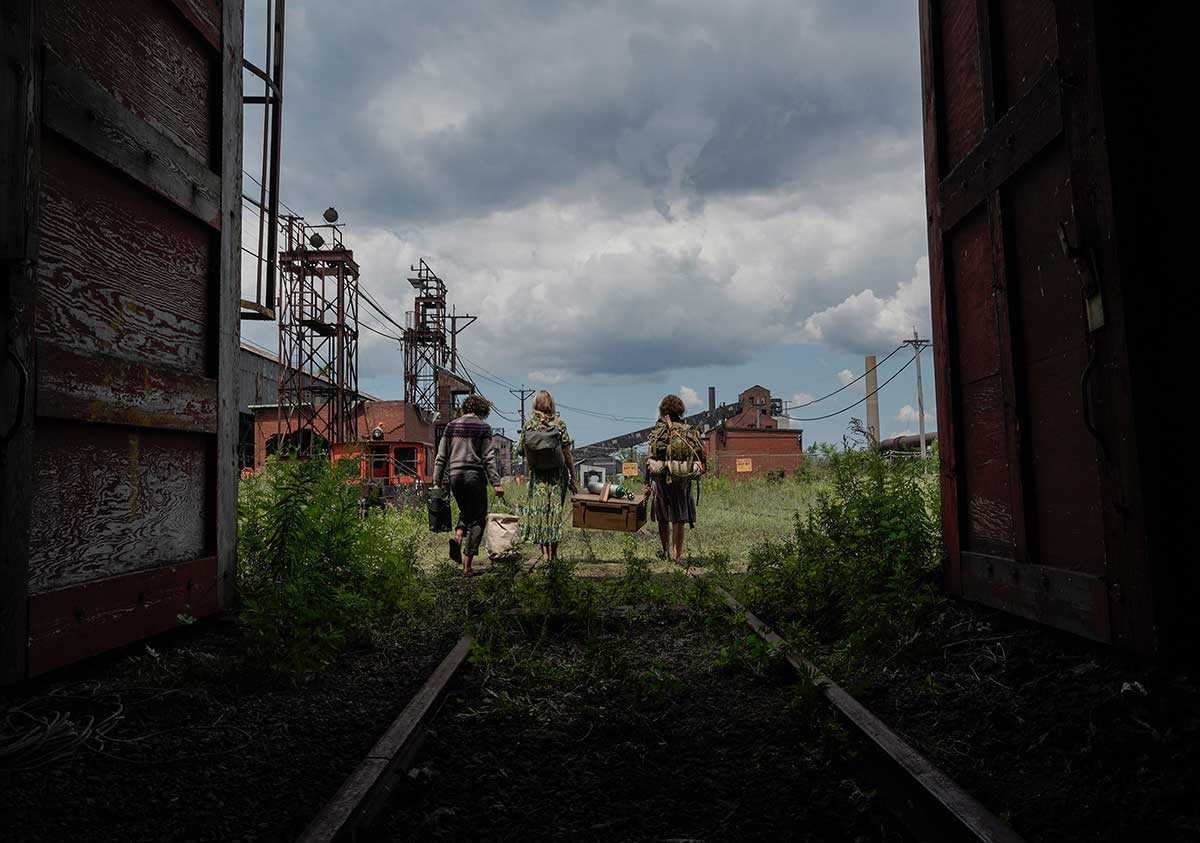
L-R, Marcus (Noah Jupe), Evelyn (Emily Blunt) and Regan (Millicent Simmonds) brave the unknown in "A Quiet Place Part II." Photo by Jonny Cournoyer. © 2019 Paramount Pictures. All Rights Reserved.
Cinematographer Polly Morgan BSC ASC comes back to film for Paramount Picture’s 'A Quiet Place Part II'
Although it had been a number of years since cinematographer Polly Morgan BSC ASC had shot using celluloid, she says coming back to film for Paramount Picture’s A Quiet Place Part II “was a complete joy.”
“On a practical level, it was so refreshing to walk around the sets with my light meter and not be stuck in a DIT tent judging the exposure on a monitor,” reveals Morgan, whose recent DP credits include FX/Marvel Television’s Legion series and Noah Hawley’s Lucy in the Sky, but who last shot 35mm film in 2016 on FX’s American Horror Story, working on additional photography.
“The rhythm and discipline of shooting on film creates a very healthy focus for the cast and crew,” she says. “And, as for the final result, although A Quiet Place 2 is a horror, it looks pretty and engaging, with a nostalgic look that you would find hard to achieve digitally.”
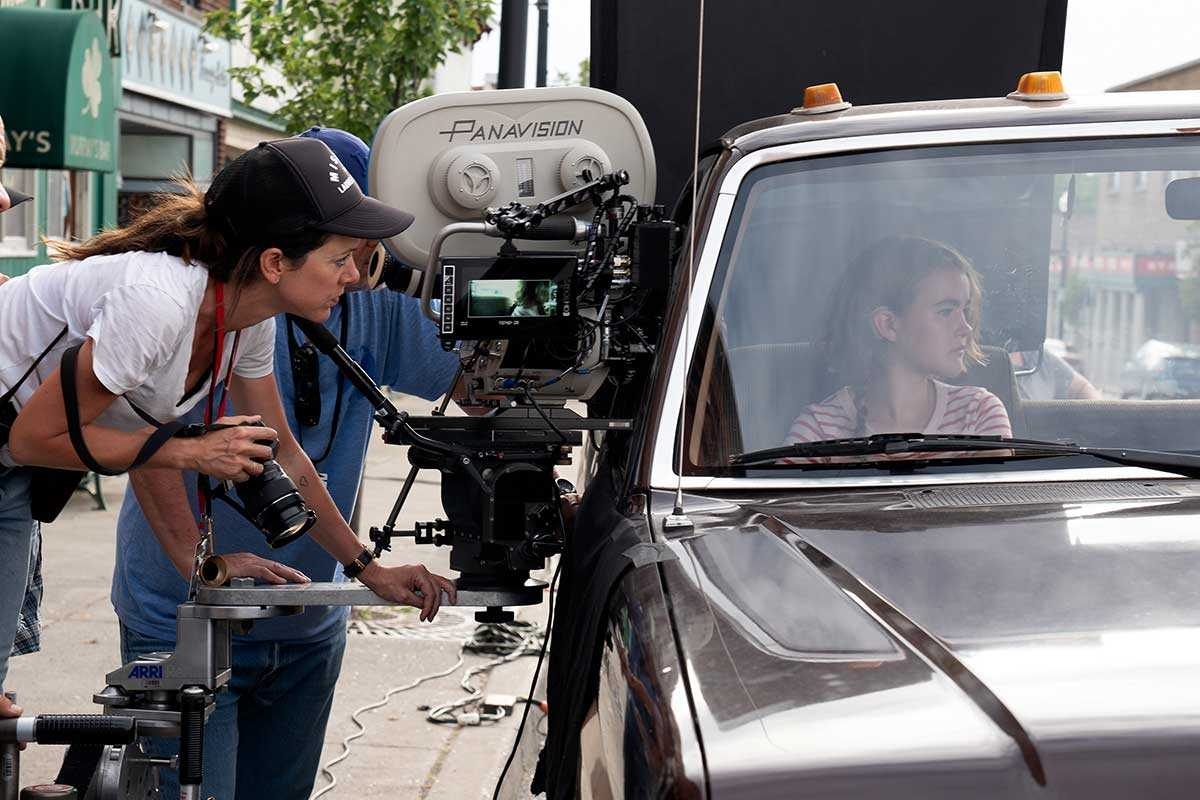
Cinematographer BSC ASC Polly Morgan, left, and Millicent Simmonds on the set of Paramount Pictures' "A Quiet Place Part II." Photo by Jonny Cournoyer. © 2019 Paramount Pictures. All Rights Reserved.
Talks of a sequel to A Quiet Place (2018), directed by John Krasinski and shot on 35mm by Charlotte Bruus Christensen DFF, began in April 2018 following the box office success of the original film. On a budget of around $20 million, A Quiet Place returned an impressive $340.9 million at the box office.
The sequel was written and directed by Krasinski and stars Emily Blunt, Millicent Simmonds and Noah Jupe, reprising their roles from the first film, with Cillian Murphy and Djimon Hounsou joining the cast. Krasinski reprised his role for a small number of flashback sequences.
Where the original 2018 hit was a heart-stopping drama about parents and what they do to protect their children, A Quiet Place Part II sees the Abbott family face the terrors of the outside world as they fight for survival in silence. Forced to venture into the unknown, they quickly realize the sightless reptilian creatures that hunt by sound are not the only threats that lurk beyond the sand path.
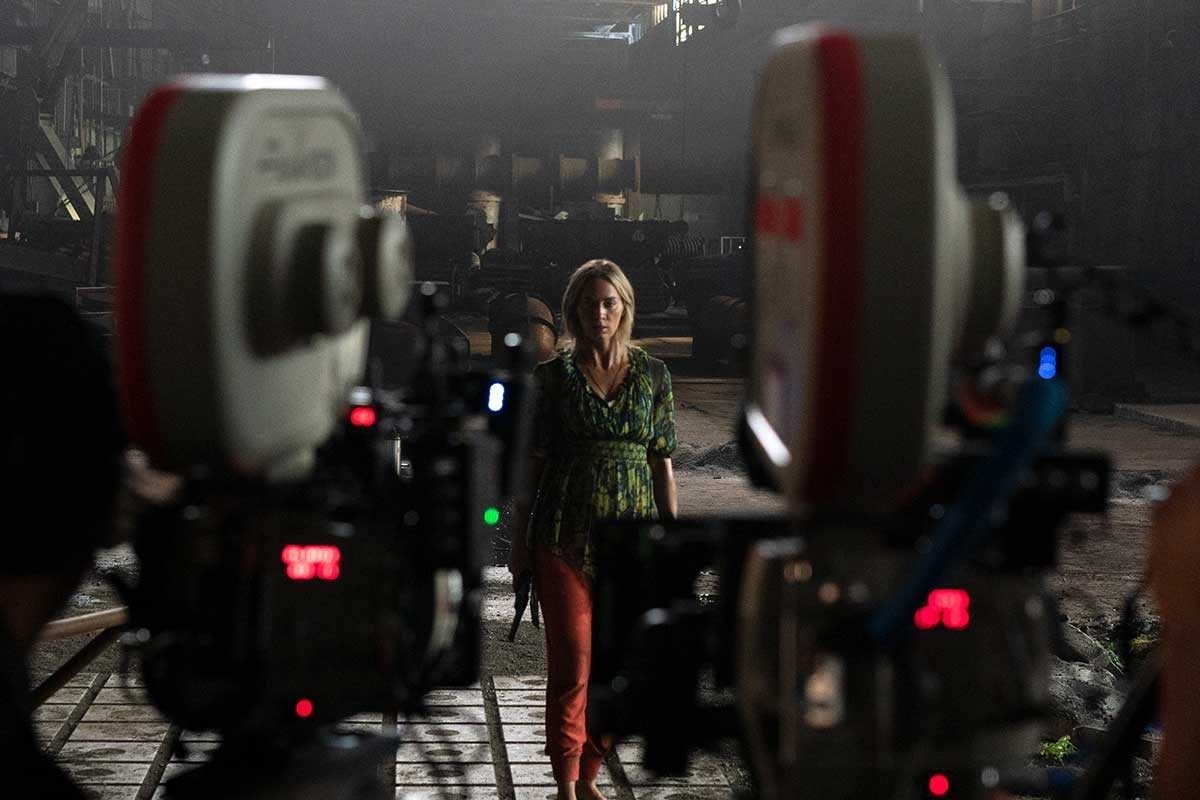
Emily Blunt on the set of Paramount Pictures' "A Quiet Place Part II." Photo by Jonny Cournoyer. © 2019 Paramount Pictures. All Rights Reserved.
“A key challenge was to make the sequel look and feel as visually-engaging as the original, so that if anyone were to watch them as a double bill, the whole thing would feel like one fluid piece of work,” says Morgan, “But this film was also about expanding the family’s world, and especially about moving with them through lots of dynamic and thrilling action sequences.”
After extensive testing, Morgan went with Panavision Millennium XL2 35mm cameras, using T-series Anamorphic lenses that were adjusted to match the C-series glass used on the first film, and to optimize their close-focus abilities and performance in low light.
She selected KODAK VISION3 500T Color Negative Film 5219 for the movie’s extensive dark situations – night scenes and stage work – comprising around 75% of screen time and used KODAK VISION3 250D Color Negative Film 5207 for the day exteriors plus a clutch of interiors. Film processing was completed at FotoKem in Los Angeles.
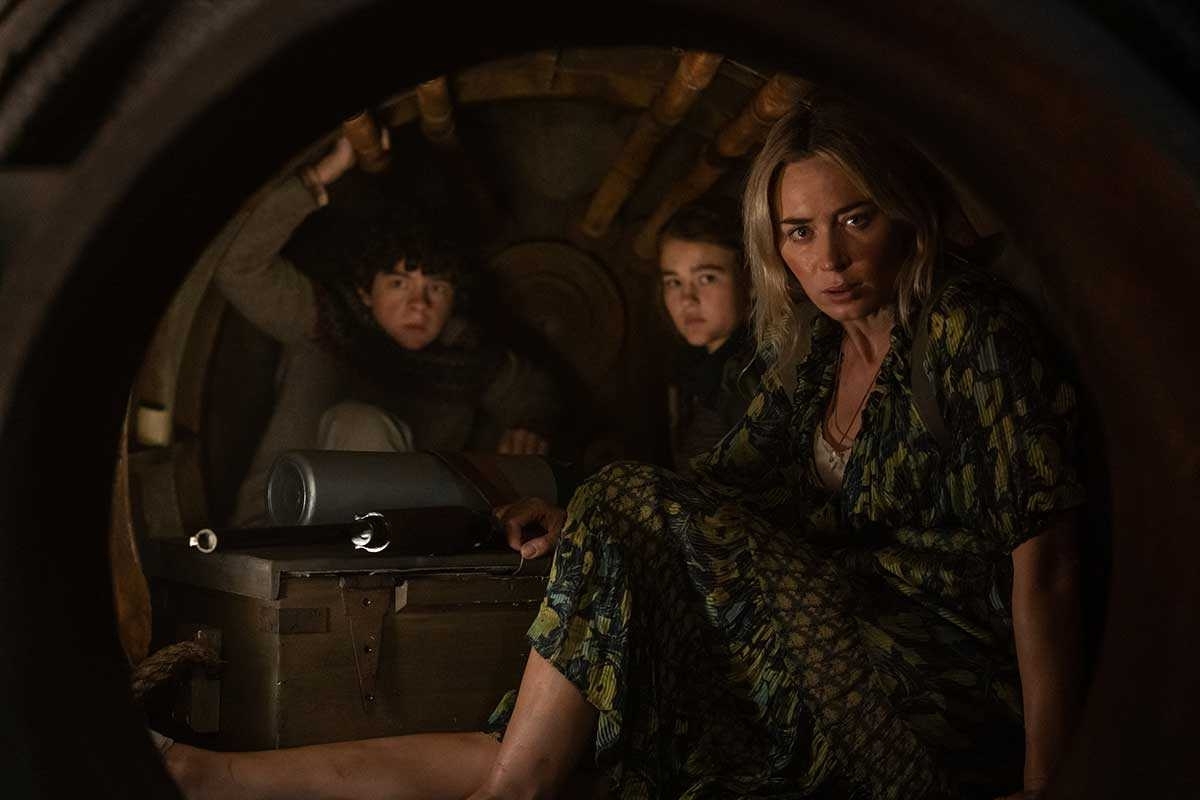
L-R, Marcus (Noah Jupe), Regan (Millicent Simmonds), and Evelyn (Emily Blunt) brave the unknown in "A Quiet Place Part II." Photo by Jonny Cournoyer. © 2019 Paramount Pictures. All Rights Reserved.
“The 500T and 250D made a very good match together for this production and a seamless transition between the two films,” Morgan says. “The way 500T sees into the dark is quite remarkable. It has so much more latitude than people are led to believe and digs deep into the shadows. There is plenty of range in the toe and the highlights roll-off beautifully, in the way only film can.”
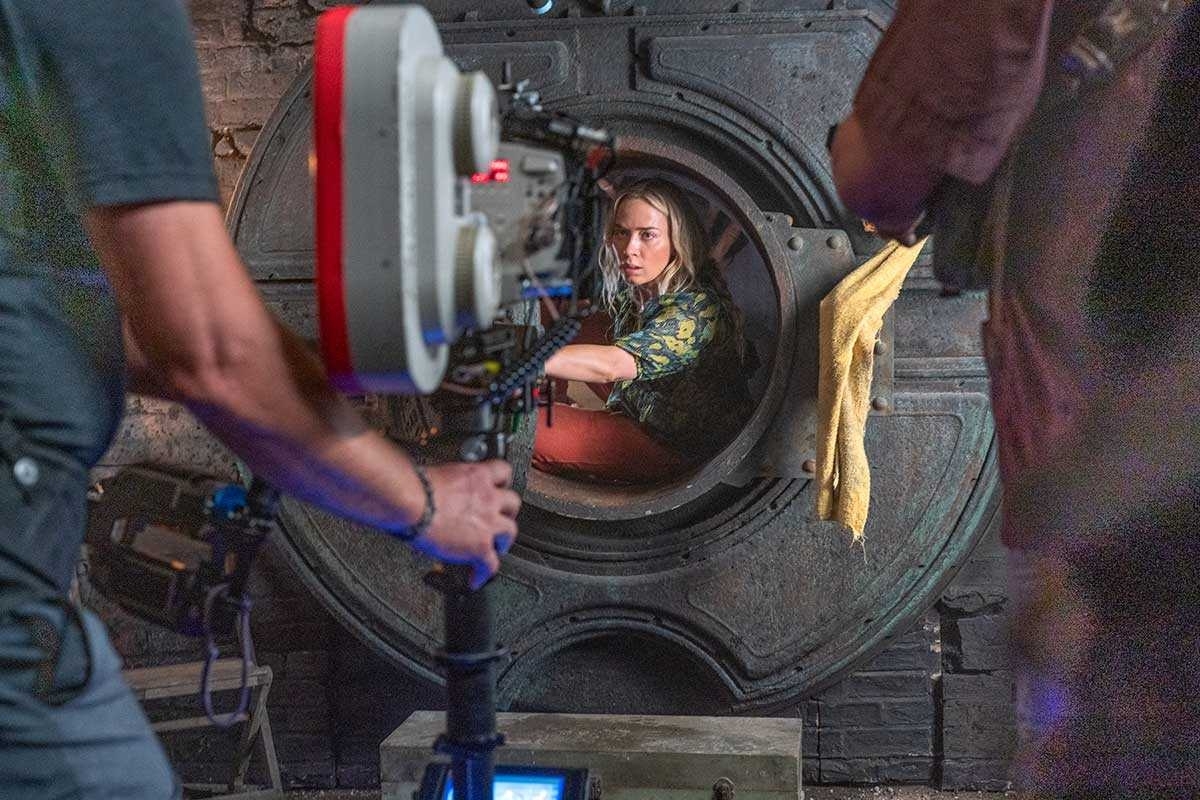
Emily Blunt on the set of Paramount Pictures' "A Quiet Place Part II." © 2019 Paramount Pictures. All Rights Reserved.
“The 500T and 250D made a very good match together for this production and a seamless transition between the two films,” Morgan says. “The way 500T sees into the dark is quite remarkable. It has so much more latitude than people are led to believe and digs deep into the shadows. There is plenty of range in the toe and the highlights roll-off beautifully, in the way only film can.”
For example, one of the most challenging lighting and shooting situations was the furnace set, nicknamed ‘The Tube of Death.’ “It was like a coffin. If you sat in it, your head touched the roof,” Morgan exclaims. “With five actors inside, plus the camera, it was very hard to light, and my meter was reading just 0.7 most of the time. But the 500T captured the actors who were lit in in foreground beautifully, and the fall-off felt very natural, just like the human eye. It rivals any digital sensor out there.”
She adds, “You hear so much technical rhetoric about digital having more latitude than film, but that’s simply not true. We worked in some very dark situations, really pushing the negative to the limit and film held it beautiful. There was more than one occasion where my highlights were over by more than 6 stops, but I never had to worry. They just rolled-off, held all the detail, and results looked great.”
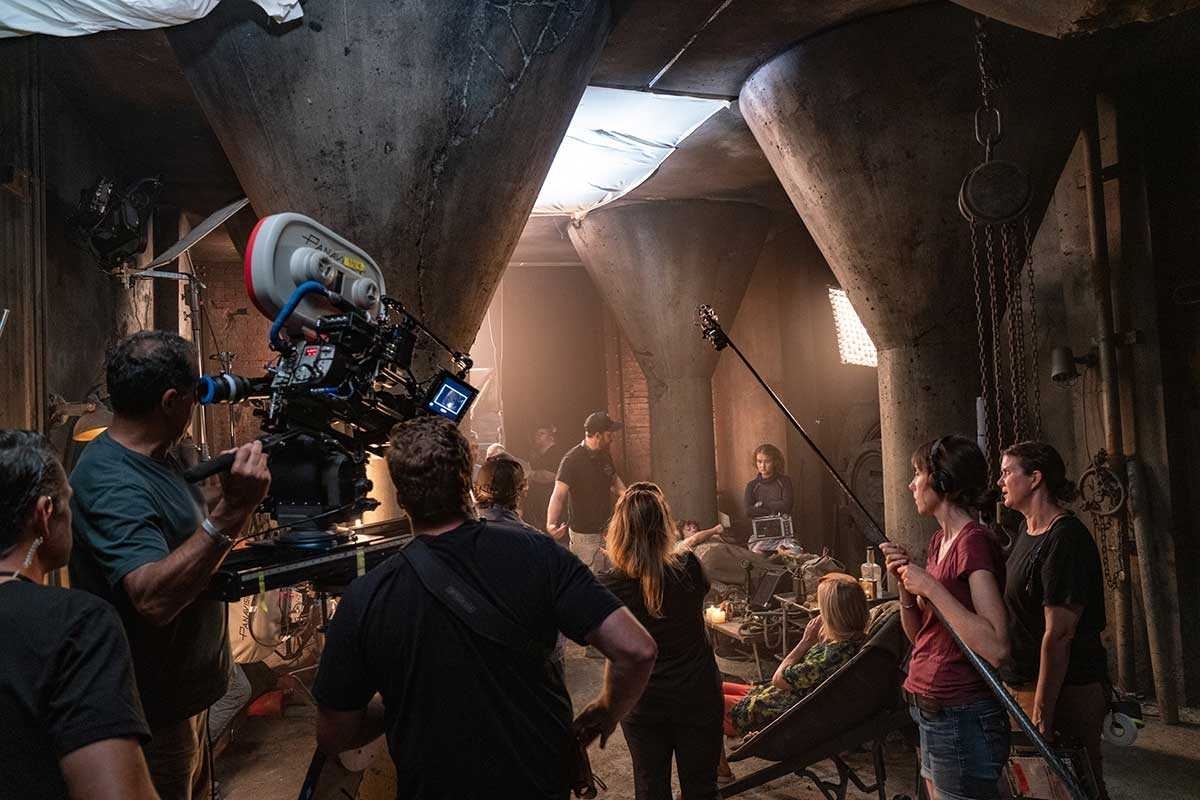
On the set of Paramount Pictures' "A Quiet Place Part II." Photo by Jonny Cournoyer. © 2019 Paramount Pictures. All Rights Reserved.
Morgan describes the 250D as “very pretty. It looks naturalistic and the color rendition on greens is particularly beautiful, unlike anything you can capture with a digital camera, where things can look artificially chroma-green. In the scene when the family emerge from the steel mill into the dappled light of a hot summer’s day, the 250D was photographically faithful to the hues in the foliage and the hot shafts of sunlight.”
Where A Quiet Place Part II moves on from the original film is in the how the camera follows the action. “The script was full of dynamic movement and action. John wanted to always keep the camera moving and create long ‘oners’ to play with rhythm and tension and to show how normal life can suddenly become very different and dangerous - all in the same shot.”
Energizing the camera with what she describes as “a lot of complicated choreography,” Morgan deployed an array of tracking vehicles, often driving at full tilt with the camera mounted variously on jibs, cranes or Steadicam vests. For an early, 20-second-action scene featuring a flashback to the creatures’ initial attack in the town center, a Volvo had its roof taken off in order to incorporate a sliding rig with a motion control arm and mini remote head which allowed the camera to freely pan and tilt between views through the car’s front and rear windscreens, while also taking in the actor’s fear-filled performances.
“Making A Quiet Place 2 was challenging and adventurous, but ultimately a lot of fun,” concludes Morgan. “I love shooting on film and think it really supported the escapism and adventurous storytelling.”